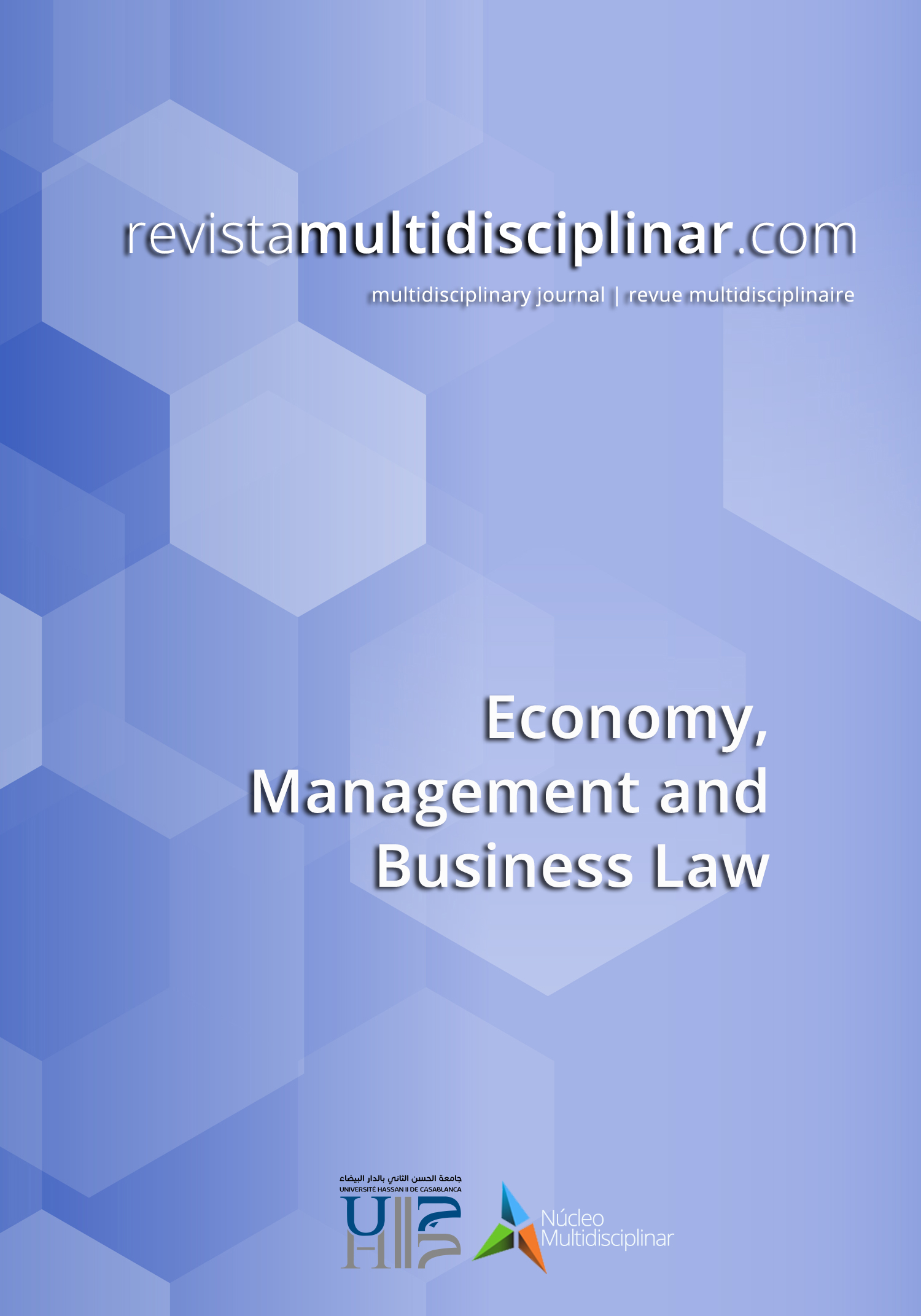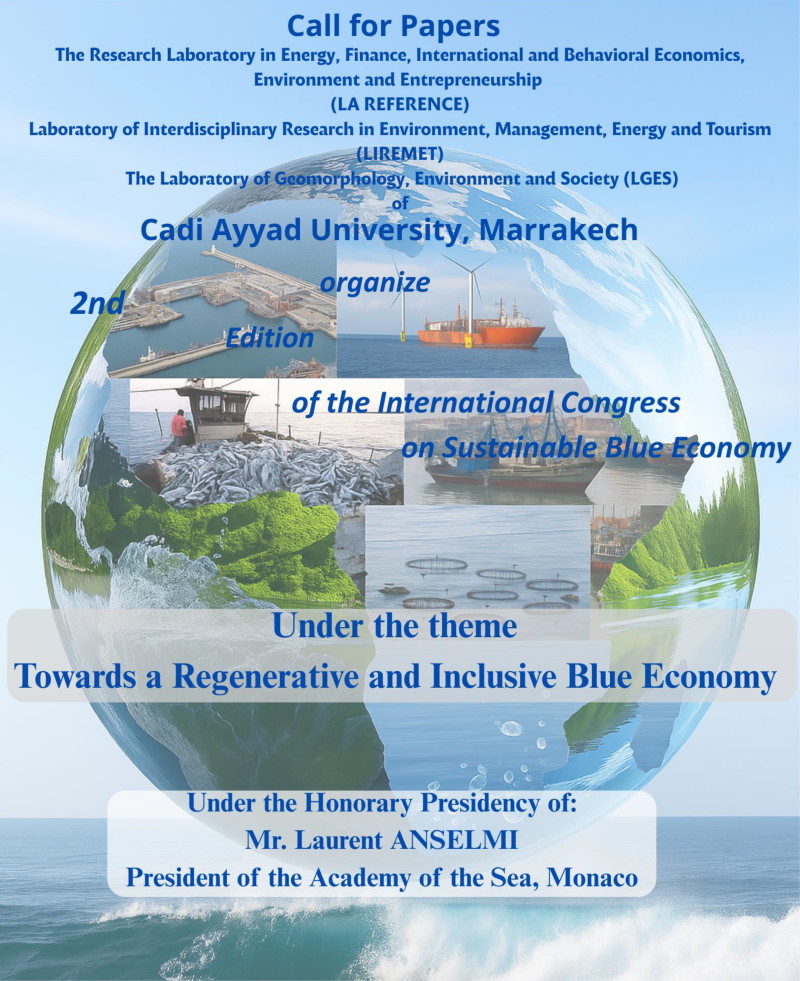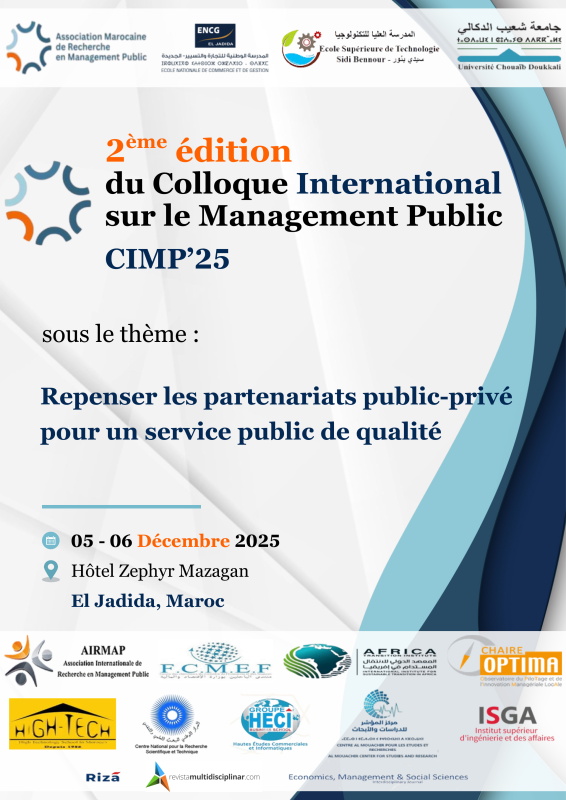Monetary policy challenges in Morocco
Exploring the possibility of reconciling price stability and economic growth
DOI:
https://doi.org/10.23882/rmd.24191Keywords:
Monetary Policy, inflation, economic growth, reconciliationAbstract
In this research paper, we used the VECM framework to assess Moroccan central bank’s ability to target inflation. We also explored the possibility of reconciling between inflation control and growth stimulation through an impulse response analysis. Our empirical results showed that interest rate adjustments as monetary policy measure could be a relevant choice in a context of moderate and short-lived inflation since it provides a wide margin for reconciling price stability and economic growth. In times of high and persistent inflation, the central bank should prioritize inflation control through a permanent decrease in its money supply.
References
Ahmad, D., Afzal, M., & Ghani, U. (2016). Impact of Monetary Policy on Economic Growth Empirical Evidence of Pakistan. International Journal of Applied Economic Studies, 4(6), 1–9.
Baumol, W. J., & Blinder, A. S. (1985). Economics—Principles and Policy -Third Edition (3rd edition). Harcourt Brace Jovanovich.
Chiaraah, A., & Nkegbe, P. K. (2014). GDP Growth, Money Growth, Exchange Rate and Inflation in Ghana. Journal of Contemporary Issues in Business Research, 3(2), 75–87.
Fleming, J. M. (1962). Domestic Financial Policies Under Fixed and Under Floating Exchange Rates. IMF Staff Papers, 1962(003). https://doi.org/10.5089/9781451968873.024.A004
Gillani, D. Q., & Abdin, A. U. (2021). Impact of Monetary Policy on Economic Growth in Pakistan Economy. Journal of Education and Social Studies, 2(3), 95–101. https://doi.org/10.52223/jess.20212305
Hansen, A. H. (1949). Monetary theory and fiscal policy. McGraw-Hill Book Co.
Hansen, A. H. (1951). Classical, Loanable-Fund, and Keynesian Interest Theories. The Quarterly Journal of Economics, 65(3), 429–432.
Hansen, A. H. (1953). A guide to Keynes. McGraw-Hill Book Co.
Harrod, R. F. (1937). Mr. Keynes and Traditional Theory. Econometrica, 5(1), 74–86. https://doi.org/10.2307/1905402
Hicks, J. R. (1937). Mr. Keynes and the ‘Classics’; A Suggested Interpretation. Econometrica, 5(2), 147–159. https://doi.org/10.2307/1907242
Keynes, J. M. (1936). The general theory of employment, interest and money. Macmillan.
Meade, J. E. (1937). A Simplified Model of Mr. Keynes’ System. Review of Economic Studies, 4(2), 98–107.
Mundell, R. (1960). The Monetary Dynamics of International Adjustment under Fixed and Flexible Exchange Rates. The Quarterly Journal of Economics, 74(2), 227–257.
Mundell, R. (1963). Capital Mobility and Stabilization Policy under Fixed and Flexible Exchange Rates. The Canadian Journal of Economics and Political Science / Revue Canadienne d’Economique et de Science Politique, 29(4), 475–485. https://doi.org/10.2307/139336
Rogoff, K. (1985). The Optimal Degree of Commitment to an Intermediate Monetary Target. The Quarterly Journal of Economics, 100(4), 1169–1189. https://doi.org/10.2307/1885679
Sargent, T., & Wallace, N. (1981). Some unpleasant monetarist arithmetic. Quarterly Review, 5(Fall), 1–17.
Sims, C. A. (1992). Interpreting the macroeconomic time series facts: The effects of monetary policy. European Economic Review, 36(5), 975–1000. https://doi.org/10.1016/0014-2921(92)90041-T
Sousa, J., & Zaghini, A. (2008). Monetary policy shocks in the euro area and global liquidity spillovers. International Journal of Finance & Economics, 13(3), 205–218. https://doi.org/10.1002/ijfe.320
Starr, M. A. (2005). Does money matter in the CIS? Effects of monetary policy on output and prices. Journal of Comparative Economics, 33(3), 441–461. https://doi.org/10.1016/j.jce.2005.05.006
Stiglitz, J. E. (1993). Principles of Macroeconomics. W.W. Norton.
Uhlig, H. (2005). What are the effects of monetary policy on output? Results from an agnostic identification procedure. Journal of Monetary Economics, 52(2), 381–419. https://doi.org/10.1016/j.jmoneco.2004.05.007
Wauk, G., & Adjorlolo, G. (2019). The Game of Monetary Policy, Inflation and Economic Growth. Open Journal of Social Sciences, 07(03), 255–271. https://doi.org/10.4236/jss.2019.73022
Downloads
Published
How to Cite
Issue
Section
License
Copyright (c) 2023 Younes El Khattab

This work is licensed under a Creative Commons Attribution-NonCommercial 4.0 International License.









